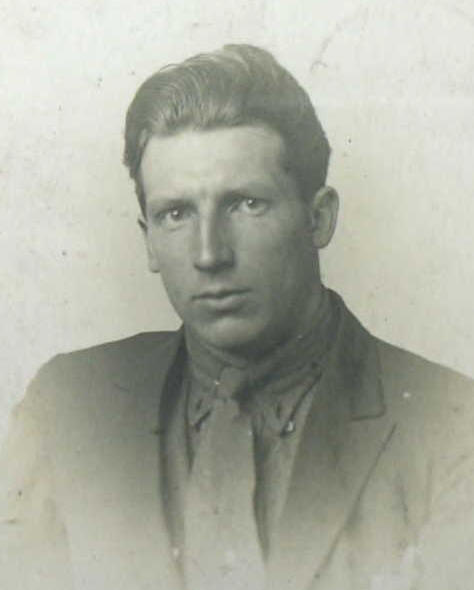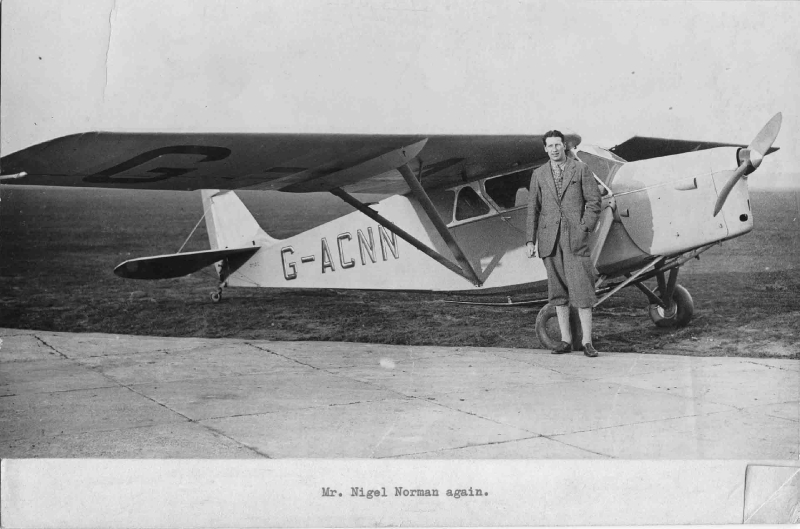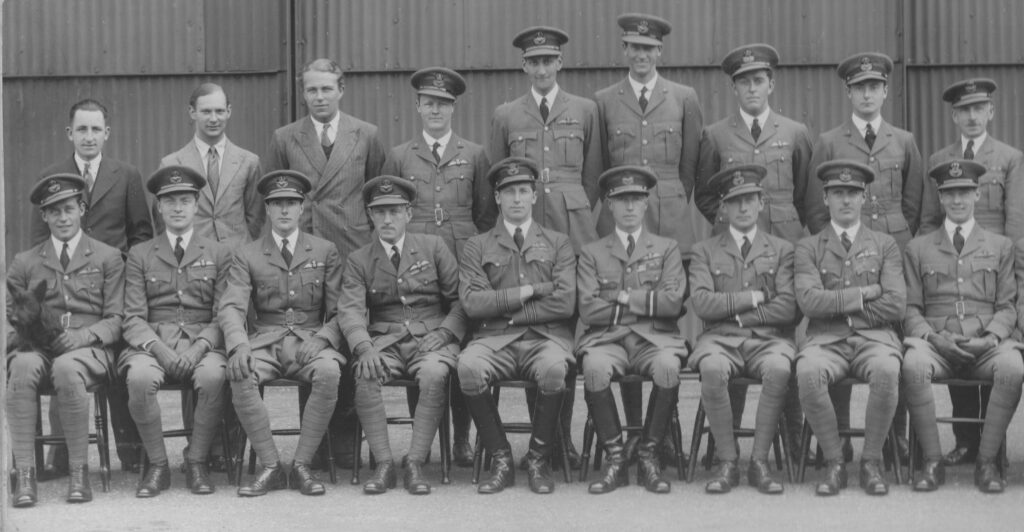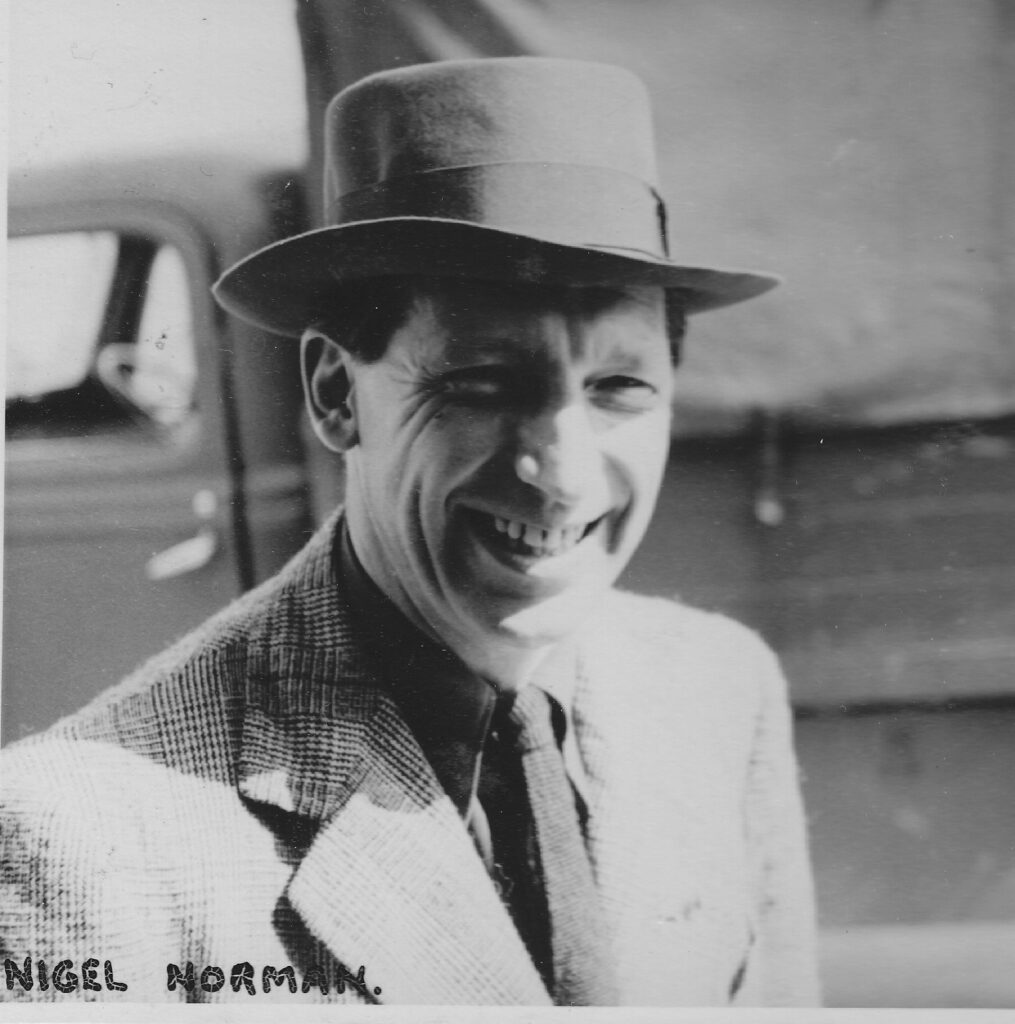Henry Nigel St. Valery Norman was born on May 21st, 1897, son of the Right Hon. Sir Henry Norman (created a baronet of Honeyhanger, Surrey, 1915), whom he succeeded in 1939. He was educated at Winchester, and at Trinity College, Cambridge, and during the 1914-18 war served in France in the K.G.A. and the R.E.

In 1926 he became a private aircraft owner, and two years later, with Mr. F. A. I. Muntz, founded Airwork Limited to construct and develop Heston Airport. He specialised in planning airports in this country and abroad.

In 1926 he joined the Auxiliary Air Force as a pilot officer, and served with No. 601 (County of London) Squadron for10 years, being promoted squadron leader in November, 1931. In March, 1940, he became temporary, wing commander; in June, 1942, temporary group captain, and in March this year acting air commodore.

From the early days of the war he worked in close collaboration with the Army on matters pertaining to airborne troops. It was his brain which controlled the air side of the first British paratroop raid on Italy shortly after she entered the war. He not only arranged all the details, but took a personal interest in all the numerous training exercises before the raid and accompanied the paratroops on the expedition, returning. regretfully, he said, in an aircraft, as he was not at that time a proficient parachutist. When he got back, he went on a parachute course at one of the R.A.F. schools. He distinguished himself in the raid by British parachute troops on the coast of northern France in March, 1942, when the radio location post at Bruneval, 12 miles north of Havre, was destroyed. It was a combined operation of the Royal Navy, the Army, and the Royal Air Force, the carrying force of RAF bombers being under Grp. Capt. Sir Nigel Norman and led by Wing Cdr. P. C. Pickard. As officer commanding a R.A.F. formation of an airborne division he was responsible for the intricate organisation before the trans-port of our airborne troops to North Africa.
In 1926 Norman married Patricia Moyra, eldest daughter of the late Lt. Col J. H. A. Annesley, and they had three sons, the eldest of whom, Mark Annesley, born on February 8th, 1927, succeeds as third baronet.
Private flying, commercial and Service aviation all lose a man of a type they can ill spare in the death of Nigel Norman. For the four years he commanded 601 squadron, those who were associated with him knew that a better or more enthusiastic commanding officer could hardly have been found.

His interest in aviation was unbounded, and there were few aspects of it that he omitted from his activities. In 1935, in association with Graham Dawbarn, he founded the firm of Norman and Dawbarn, and was responsible for the lay-out of many municipal airports in this country, including those at Birmingham, Ringway, Jersey, and Guernsey.
He was a Fellow of the Royal Aeronautical Society, a member of the Aviation Committee of the London Chamber of Commerce, and a member of the Council of the Air Registration Board, of which body he was also chairman of the Design and Construction Panel. It is not only for his aviation activities that Nigel Norman will be remembered. He combined an imaginative approach to the problems of civil aviation which, together with his great personal charm and translucent integrity of character, made it certain that he would have played a great part in the future of civil aviation.
19 May 1943, Norman died when Lockheed Hudson IIIA FH168 that was to carry him to North Africa crash landed after take-off from RAF St.Eval and burst into flames.

ROUTINE
It was up in an Operational Cloud
At 29,000 feet,
I was knocking along with the usual crowd
The Formation was pretty neat.
It was fairly cold – (99 below)
With Turbulence severe,
Visibility 13 yards or so
(for us that was pretty clear!)
The Ice Accretion on each Machine
Was a couple of inches or less
In fact I was thinking it couldn’t have been
A pleasanter day for a test
When all of a sudden it got pitch dark,
The air became very rough
And before we knew, we were plunging through
Some Cumulo-Nimbus stuff.
I gave the sign for inverted flight
And they passed it along the line;
Everything would have been all right
If Reggie had seen the sign.
Over we went — but he went straight on,
I thought there might be a crash
So I made a dart for my “Leg Course Chart”
And made up my mind in a flash.
Then as my wheels cut through his wing,
I leaned right out and I said:
“You are 97 miles south of Tring
And 4 miles from Beachy Head.
You will fall in the sea and will probably drown,
If you ask me how I know,
I made a land fall at Boscombe Down
Three hours and a half ago.”
Myself, I consider the boy did well
When he fell in the sea beneath,
For he saved the machine with a 4-mile swim
Holding the Prop in his teeth.
But we thought it a joke in the Mess that night
As we sat around with our beer,
And talked over what was just one more flight
In a normal training year.
Written by Nigel Norman in 1931 after a lecture on the blind flying the squadron would be expected to carry out during the ensuing year.